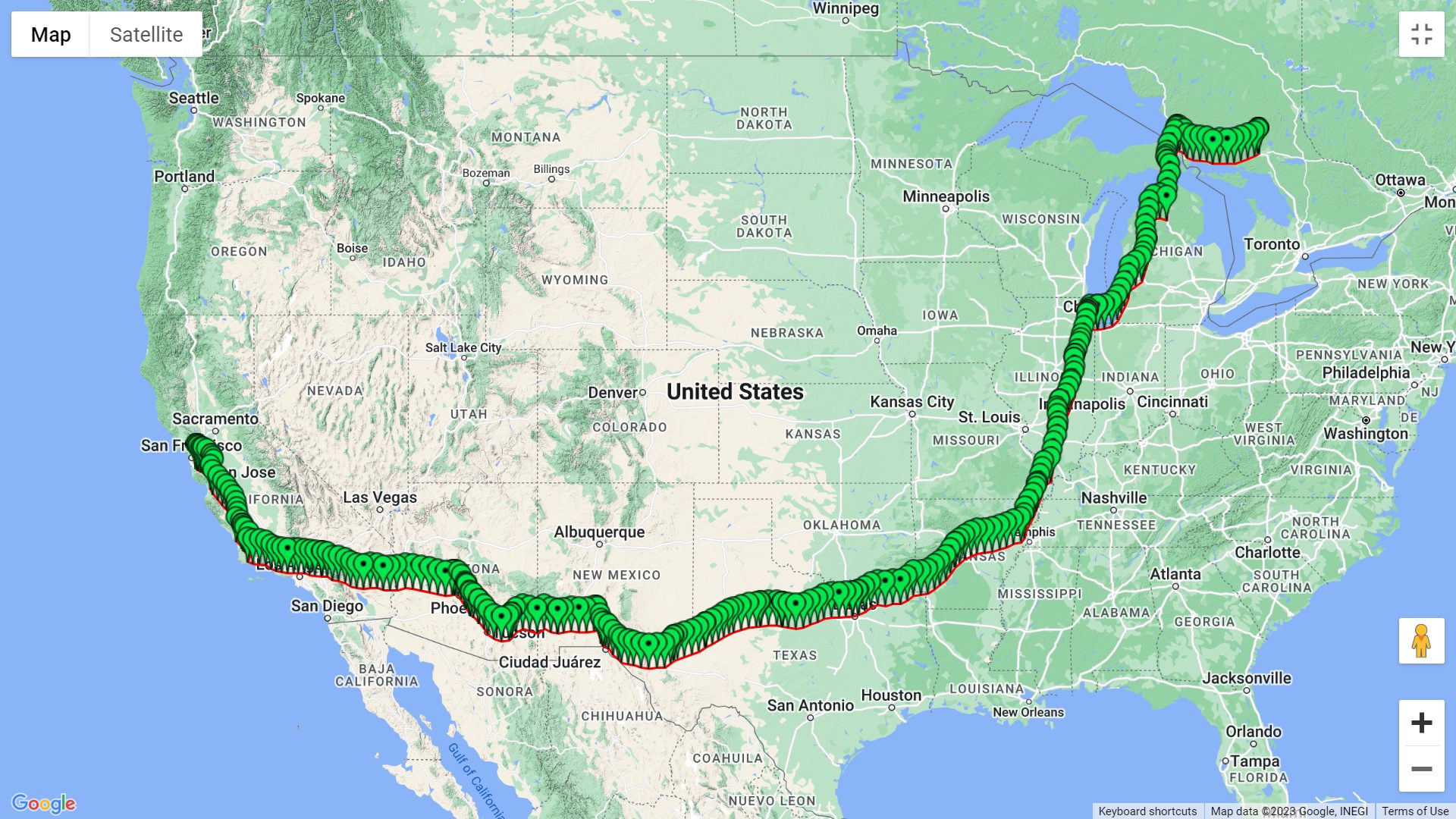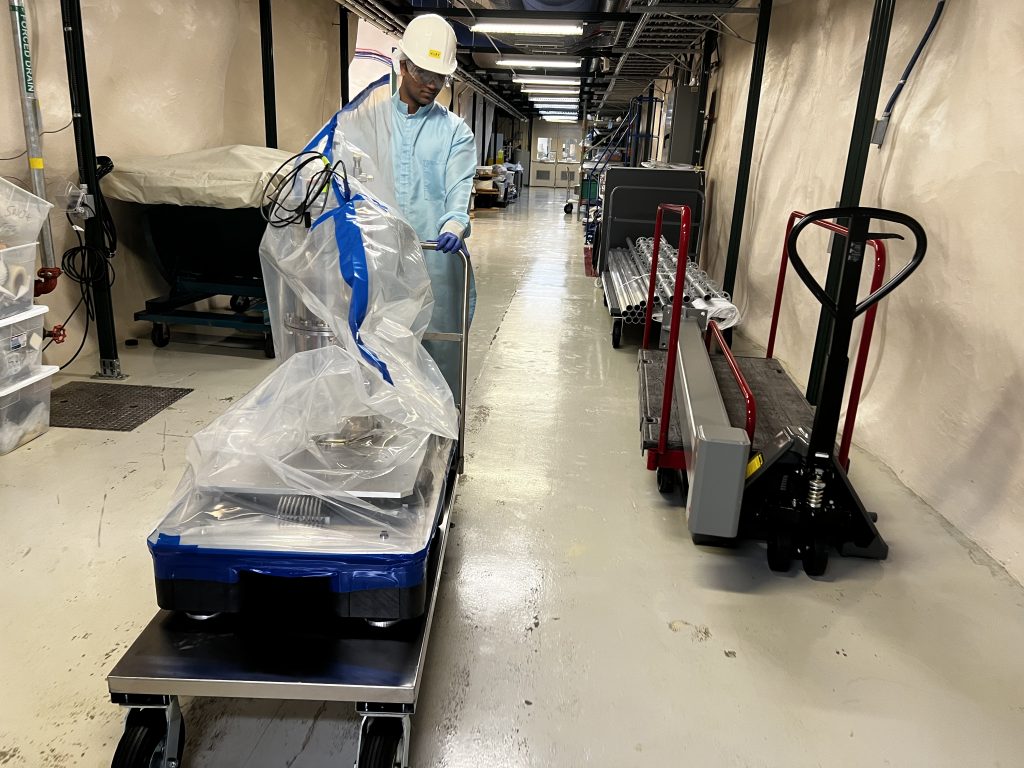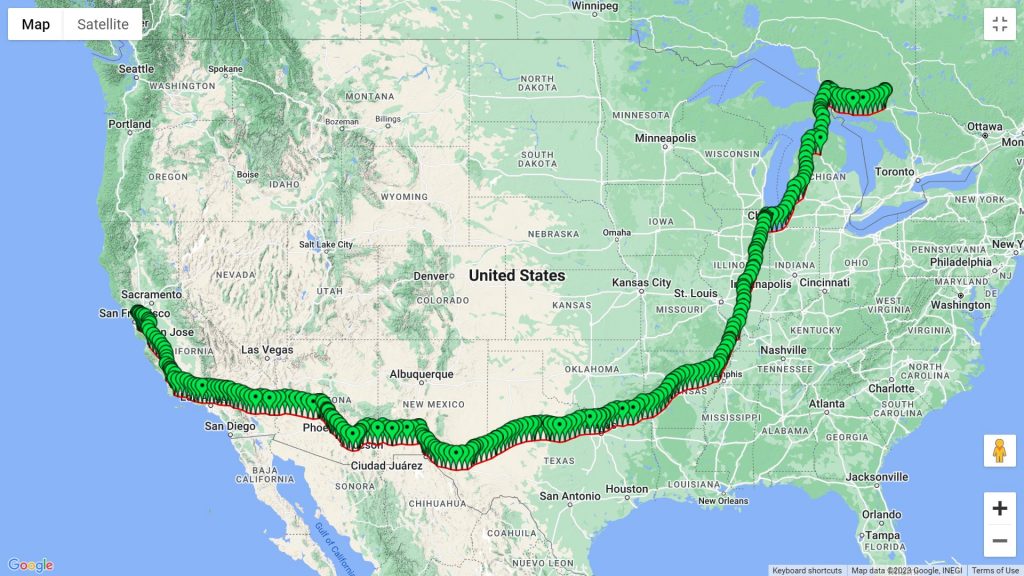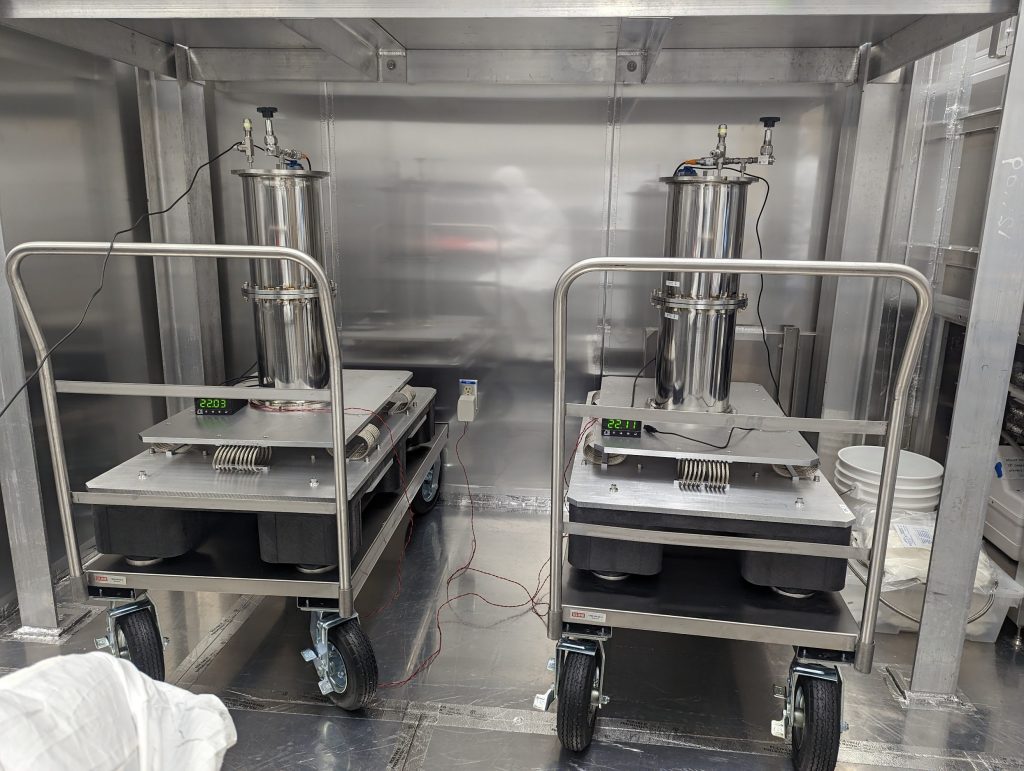
Major milestone reached for dark matter detector at SNOLAB
After 10 years and more than 5,000kms, one of the world’s most sensitive detector towers are now safely underground
SUDBURY: The first pair of detector towers that will be at the heart of the world’s most sensitive direct-detection experiment arrived 2 kms underground at SNOLAB last week, marking a significant milestone in the global search for dark matter.
SuperCDMS SNOLAB will look for relatively light dark matter particles using the world’s most sensitive low-mass dark matter direct-detection experiment in the world’s deepest and cleanest lab, said SNOLAB Executive Director Jodi Cooley.
“SNOLAB and SuperCDMS are made for each other,” said Cooley.
“The success of SuperCDMS will come down to two things: improvements in the detector design and the location of the experiment itself deep underground and shielded from cosmic rays,” Cooley said.
“It’s been 10 years of technological development to build these state-of-the-art detectors”, said Richard Partridge, a senior staff scientist at SLAC National Accelerator Laboratory at Stanford University and a long-time SuperCDMS researcher.

Partridge, in Sudbury to oversee the movement of the detector towers to SNOLAB, said the operation went without a hitch.
“It’s been a lot of fun,” Partridge said. “We’ve learned a lot of new things, and we’ve built some really interesting technology,” including flexible superconducting cables, electronics systems that function in extreme cold, and improved cryogenics systems – along with advances in shielding the detectors – that have made the detectors and surrounding systems better able to sense passing dark matter than ever before.
The detector towers were built at the U.S. Department of Energy-run SLAC. Other cryogenics components have arrived from Fermilab and CalTech, and delivery of other pieces coming from Jefferson Lab and Fermilab are being scheduled for later this year. Two more detector towers are still to come from SLAC.
The project team chose an indirect 5,000 km-plus truck route to Sudbury – east through Texas and north to the Sault Ste. Marie border crossing – for its low altitude to shield the detectors as much as possible from cosmic rays.

Now safely 2 kms underground at SNOLAB, the towers sit in a clean room while a 12-foot diameter shielding cavity for the experiment is completed. The next two towers are scheduled to join them as soon as September and initial preparations for the experiment are expected to be completed sometime in 2024, at which point the experimental team can begin taking initial data and working out any kinks that remain in the system.

The first two SuperCDMS sensitive low-mass dark matter direct-detection towers sit in the SNOLAB clean room 2 kms underground at Creighton Mine.
Researchers expect to run the experiment for three to four years before reaching the ultimate sensitivity the experiment can achieve, significantly pushing the limits of what we know about dark matter.
The arrival of the first two detector towers is a significant achievement, and a relief, Cooley said.
Both Cooley and Partridge credited this milestone to the professionalism of SNOLAB staff and its partner Vale, whose Creighton Mine hosts SNOLAB.
About the search for dark matter:
Scientists know that all the visible matter in the universe – all the dust and planets and stars that we can already detect through telescopes – makes up only about 15 percent of what’s actually out there. The rest is dark matter, but no one knows exactly what that is. Physicists can tell it’s there through its gravitational pull on ordinary matter, but dark matter has otherwise eluded detection.
So how do to go about finding a hypothetical particle less massive than a proton? Although hidden-sector particles are thought to interact only rarely and weakly with normal matter, when they do, they cause disturbances that could, in theory, be detected.
That’s where collaborations such as SuperCDMS SNOLAB come in. The project is the latest iteration of a series of experiments that use silicon and germanium crystals to try to find dark matter particles. These crystals are cooled to a fraction of a degree above absolute zero – hence the experiment’s name: Cryogenic Dark Matter Search, or CDMS. The hope is that at such low temperatures, researchers could detect passing dark matter particles by the tiny vibrations they create when colliding with the crystals.
Those collisions would also produce pairs of electrons and electron deficiencies, or holes, that move through the crystals, triggering more vibrations and amplifying the dark matter signal. Sophisticated superconducting electronics help detect these signals.
All of this is only possible because the experiment will be built and operated at SNOLAB, deep underground. There, the detectors will be shielded from high-energy particles, called cosmic radiation, which can create unwanted background signals.
About SNOLAB:
SNOLAB is Canada’s deep underground research laboratory, located in Vale’s Creighton mine near Sudbury, Ontario Canada. It provides an ideal low background environment for the study of extremely rare physical interactions. SNOLAB’s science program focuses on astroparticle physics, specifically neutrino and dark matter studies, though its unique location is also well-suited to biology and geology experiments.
SNOLAB facilitates world-class research, trains highly qualified personnel, and inspires the next generation of scientists.
For more information:
Michael Whitehouse
Senior Communications Officer
(705) 690-5270